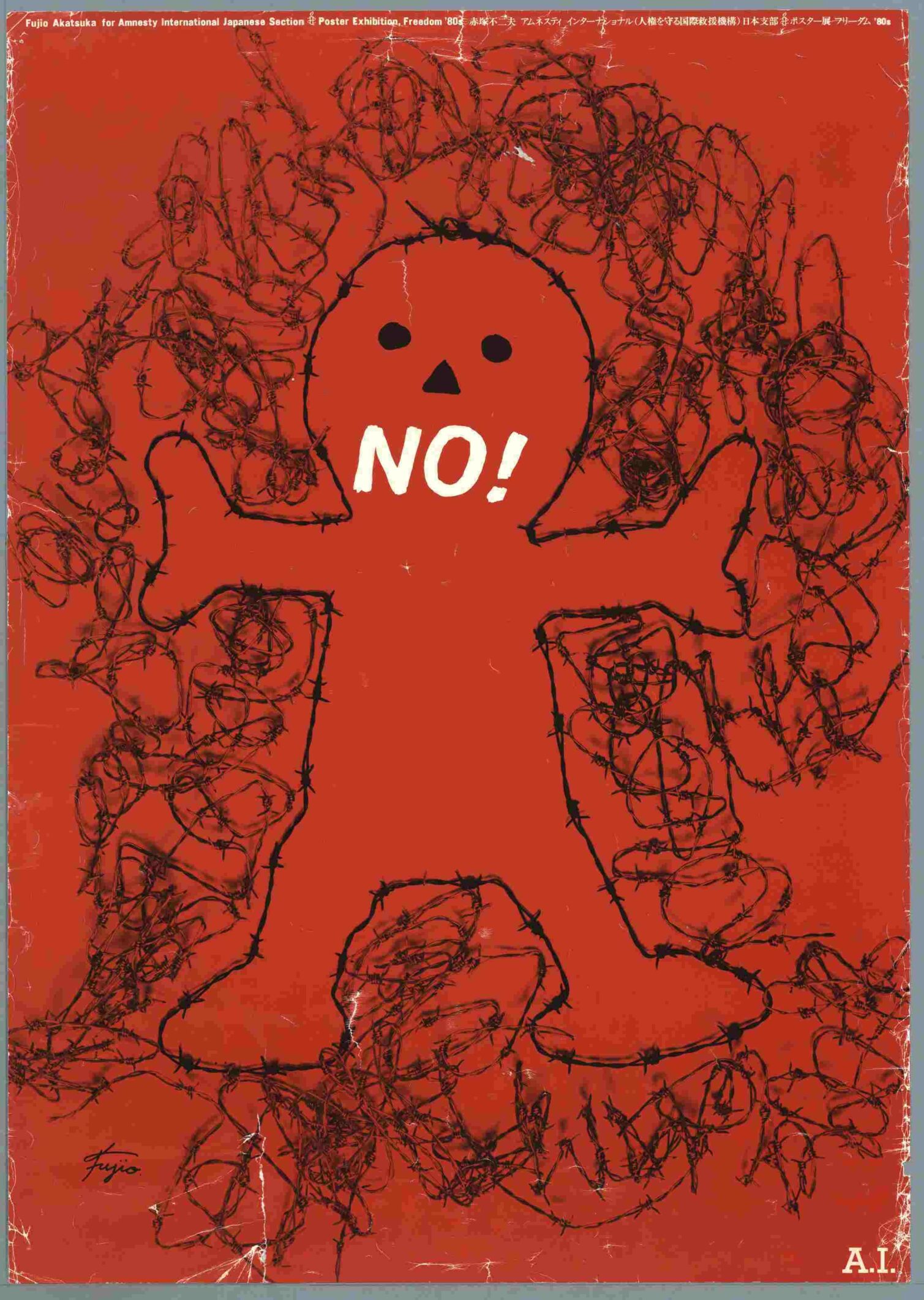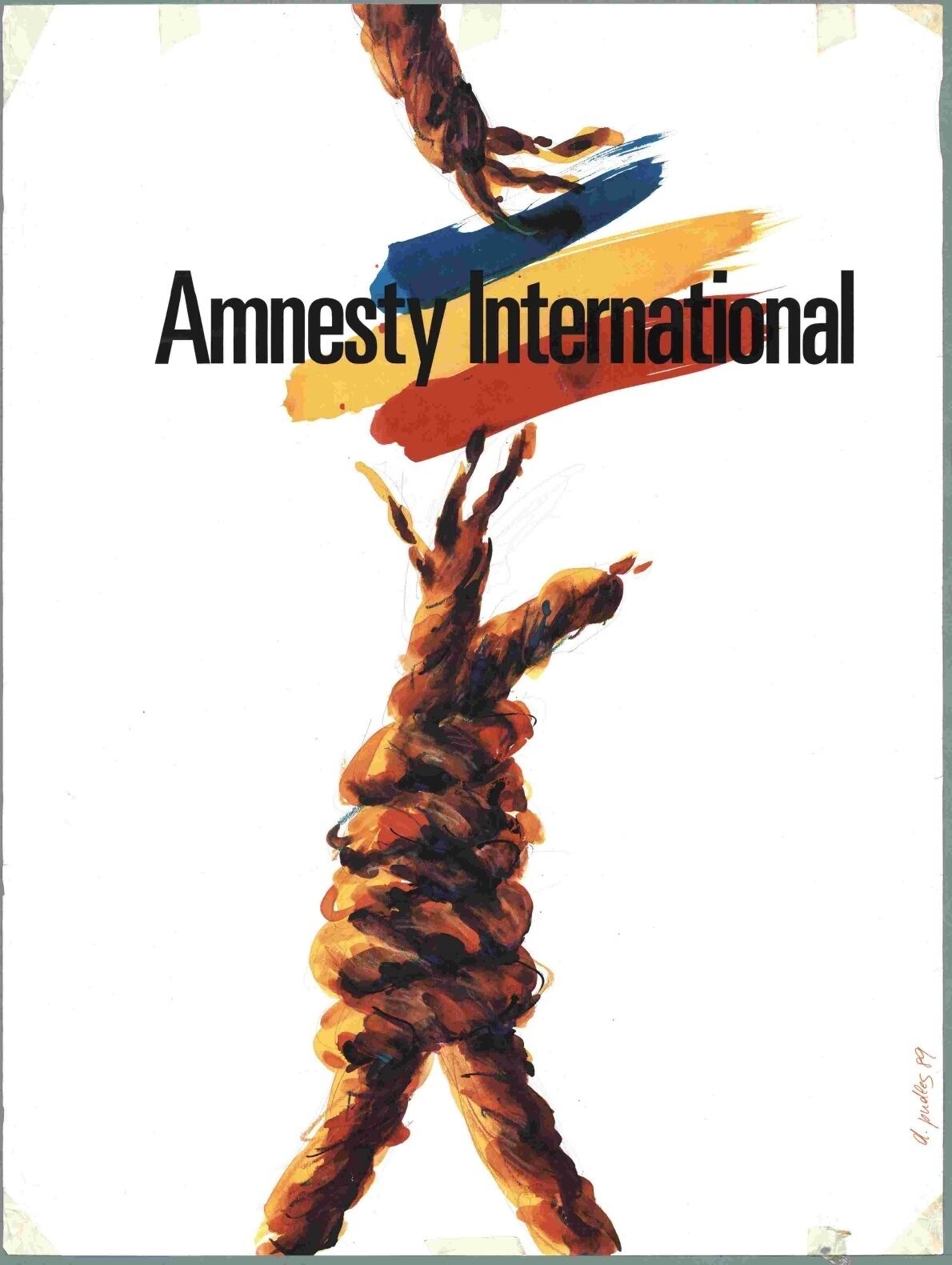Visual protest: The art of Amnesty International
Eleanor Cambridge, Assistant Editor at AM, explores the campaigns, internal developments and press perceptions of Amnesty International through documents featured in Amnesty International Archives: A Global Movement for Human Rights.
Amnesty International is a non-governmental organisation (NGO) campaigning for Human Rights across the globe. Initially begun with the specific intention of advocating for Prisoners of Conscience, Amnesty has expanded into campaigning for the abolition of torture and the death penalty as well as advocating for women’s, Indigenous peoples’ and refugee rights.

Material sourced from Amnesty International. Material housed at International Institute of Social History, Amsterdam
AM’s Amnesty International Archives: A Global Movement for Human Rights digitises the Amnesty International Secretariat’s records held at the International Institute of Social History. These records detail Amnesty’s beginning in 1961 and follow its development through to 1991. Amnesty International Archives features hundreds of thousands of images, including every Urgent Action issued between 1974-1991 detailing requests for action to intercede in humanitarian crises and protest atrocities around the world, personal correspondence of the founder Peter Benenson, oral histories and internal documents detailing the NGO’s decisions across the latter half of the twentieth century. The campaigns, internal developments and press perceptions of Amnesty are all explored in detail through the documents that are featured in the resource.

Material sourced from Amnesty International. Material housed at International Institute of Social History, Amsterdam
Commissioned by Peter Beneson and created by Diana Redhouse, the image of a candle surrounded by barbed wire has long been symbolic of Amnesty International. It was inspired by the proverb,
It is better to light a candle than to curse the darkness.
Yet if a picture is worth a thousand words, the Amnesty International Poster Collection is the visual highlight of the resource. The collection includes 217 posters from Amnesty International’s campaigns for human rights, all aiming to reach a global audience. Some are designed to inspire protest on behalf of specific campaigns while others promote Amnesty international itself, hoping to draw more members to their cause.

Material sourced from Amnesty International. Material housed at International Institute of Social History, Amsterdam
Since 1961, sections of Amnesty International around the globe have commissioned posters in 38 different languages, hoping the memorable and often haunting visuals will inspire viewers to stand against human rights violations.
The posters campaign on a range of issues including the abolition of torture, the abolition of the death penalty, womens’ rights, and Indigenous Peoples’ rights.

Material sourced from Amnesty International. Material housed at International Institute of Social History, Amsterdam
The most recent poster to be included is from 2012, campaigning for Indigenous Peoples’ Rights written in Cebuano, a native language of the Philippines. The artist, Boy Dominguez, is Filipino and uses his art to raise awareness of the ongoing struggle against the colonisation of Indigenous Peoples’ lands in the Philippines.
The posters form a key part of Amnesty International Archives offering users a chance to view how Amnesty International raised awareness for their campaigns, as the rest of the collection offers insight to the internal decisions that led to the posters being published.
Amnesty International Archives: A Global Movement for Human Rights is out now. The images featured in this blog are open-access for 30 days and can be found here:
- ‘Series of 19 posters designed by different artists (1)’
- ‘Amnesty International 1989’
- ‘Din protest kan stoppa tortyren’
- ‘Like you, the indigenous peoples have rights!’
For more information on this resource, including free trial access and price enquiries, please email us at info@amdigital.co.uk.
Recent posts

The blog highlights American Committee on Africa, module II's rich documentation of anti-apartheid activism, focusing on the National Peace Accord, global solidarity, and student-led divestment campaigns. It explores the pivotal role of universities, protests, and public education in pressuring institutions to divest from apartheid, shaping global attitudes toward social justice and reform.

This blog examines how primary sources can be used to trace the impact of young voices on society, particularly during pivotal voting reforms in the UK and the US. Explore materials that reveal insights into youth activism, intergenerational gaps, and societal perceptions, highlighting their interdisciplinary value for studying youth culture, activism, and girlhood across history.
